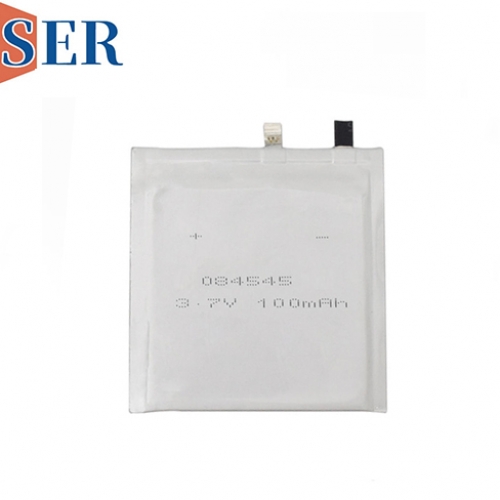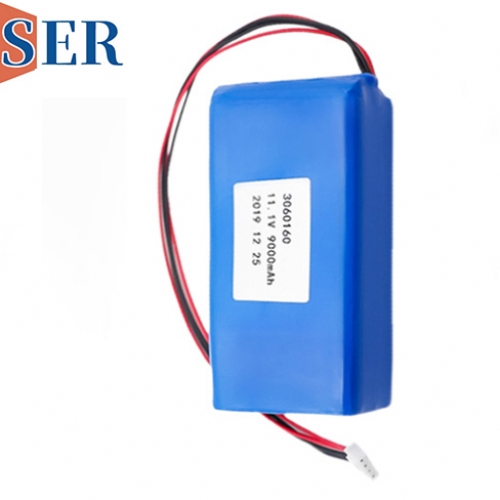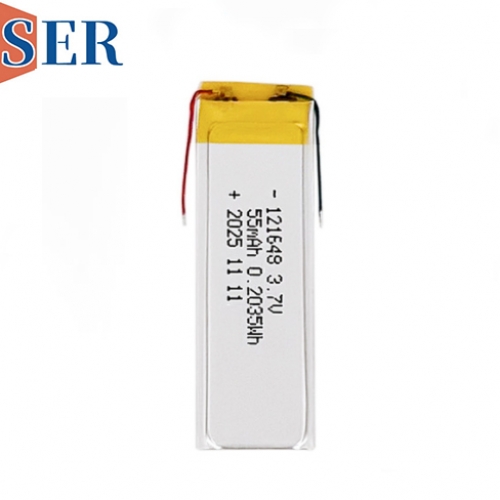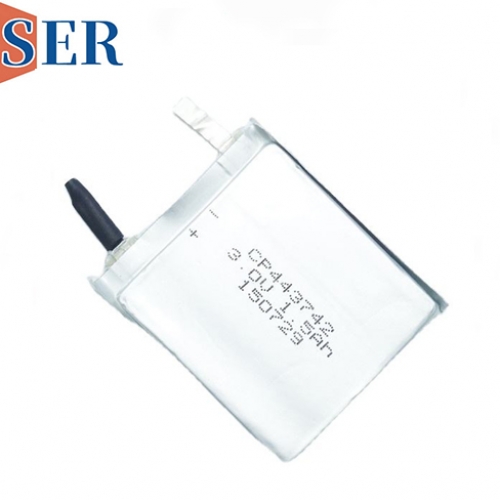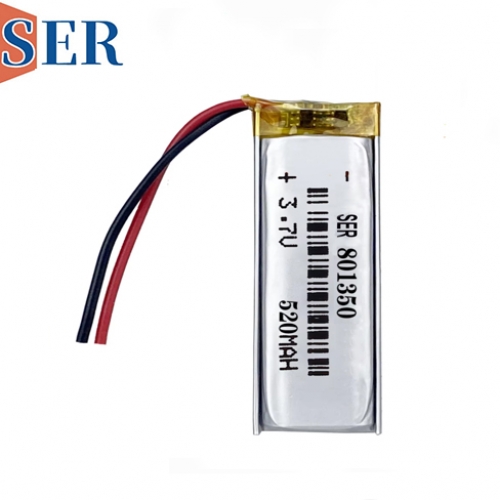Flat LiMnO₂ Batteries: The Primary Non-rechargeable ultra thin Batteries
Flat LiMnO₂ Batteries: The Primary Non-rechargeable ultra thin Batteries
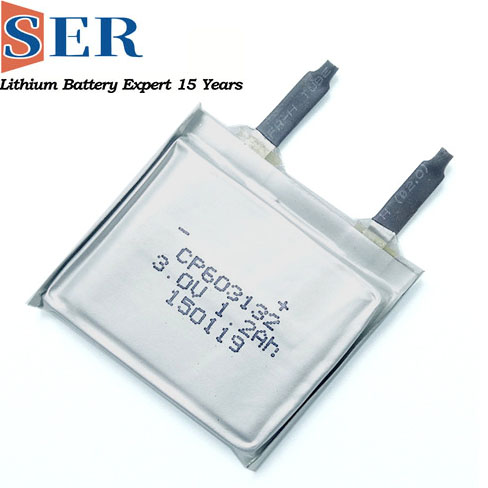
Introduction
In the era of rapid technological advancement, where every device strives to be smaller, smarter, and more efficient, the role of power sources cannot be overstated. Primary non-rechargeable ultra-thin batteries have emerged as a critical component in enabling the seamless operation of a wide range of applications, from Electronic Shelf Labels (ESL) in retail environments to the vast Internet of Things (IoT) ecosystem, Radio Frequency Identification (RFID) systems for asset tracking, and Global Positioning System (GPS) devices for location-based services. Among these, Flat LiMnO₂ Batteries, particularly models like CP301330, CP113030, CP444844, CP251525, CP502025, the 3V 750mAh CP224248, and the CP502530 ultra-thin battery pouch cells, are setting new standards in performance, reliability, and form factor.
Understanding LiMnO₂ Battery Technology
The Science Behind LiMnO₂
Lithium Manganese Dioxide (LiMnO₂) batteries are a type of primary lithium battery that has gained significant traction due to their unique chemical composition and performance characteristics. At the core of these batteries lies a chemical reaction between lithium metal (the anode) and manganese dioxide (the cathode), separated by an electrolyte. When the battery is in use, lithium ions migrate from the anode to the cathode through the electrolyte, generating an electric current.
One of the key advantages of LiMnO₂ batteries is their high energy density. This means they can store a substantial amount of energy relative to their size and weight, making them ideal for applications where space is a premium. Additionally, LiMnO₂ batteries offer a relatively flat discharge curve, ensuring a stable voltage output throughout most of their discharge cycle. This stability is crucial for devices that require a consistent power supply to function accurately, such as sensors and communication modules.
Safety and Environmental Considerations
Safety is a paramount concern in battery technology, and LiMnO₂ batteries excel in this area. Unlike some other battery chemistries, LiMnO₂ batteries are less prone to thermal runaway, a dangerous condition where the battery overheats and can potentially catch fire or explode. This is due to the inherent stability of the manganese dioxide cathode and the relatively low reactivity of the lithium metal anode.
Furthermore, LiMnO₂ batteries are more environmentally friendly compared to some older battery technologies. They do not contain toxic heavy metals such as cadmium or mercury, which are commonly found in certain battery types. This makes them easier to dispose of and reduces their impact on the environment, aligning with the growing global focus on sustainability.
Introducing the CP301330 Flat LiMnO₂ Battery
Design and Form Factor
The CP301330 Flat LiMnO₂ Battery is a testament to innovative battery design. Its flat form factor sets it apart from traditional cylindrical batteries, offering several advantages for modern applications. The flat shape allows for more efficient use of space within the device, enabling manufacturers to design smaller, more compact products without sacrificing battery capacity.
This battery is engineered to fit seamlessly into a variety of devices, from slim ESLs that display real-time pricing information to wearable IoT sensors that monitor environmental conditions. Its compact size and lightweight construction make it an ideal choice for applications where portability and minimal bulk are essential. Whether it's a tiny RFID tag attached to a product or a GPS tracker worn on a pet's collar, the CP301330 can provide the necessary power without adding unnecessary weight or size.
Performance and Specifications
The CP301330 battery operates at a nominal voltage of 3V, with a capacity that can vary depending on the specific manufacturing specifications. This combination of voltage and capacity makes it well-suited for a wide range of low to medium power applications.
In terms of performance, the CP301330 offers a long shelf life, meaning it can be stored for extended periods without significant loss of capacity. This is particularly important for devices that may not be used frequently, such as emergency backup sensors or seasonal inventory tags. Additionally, the battery has a low self-discharge rate, ensuring that it retains its charge when not in use.
Compatibility and Applications
The CP301330 Flat LiMnO₂ Battery is compatible with a variety of devices and systems. Its 3V output makes it suitable for powering microcontrollers, sensors, and other low-power electronic components. In the ESL space, it can provide the energy needed to update display information, communicate with a central server, and maintain a stable connection.
For IoT applications, the CP301330 is an excellent choice for powering wireless sensors that collect and transmit data. Its long-lasting power ensures that the sensors can operate for extended periods without the need for frequent battery replacements, reducing maintenance costs and improving overall system reliability. In RFID systems, the battery can power active tags, enabling them to transmit data over longer distances and with greater accuracy.
In the GPS domain, the CP301330 can be used in small, portable tracking devices. Its compact size and reliable power output make it ideal for tracking assets, pets, or even individuals in certain applications. Whether it's a tracking device attached to a shipping container or a wearable GPS tracker for outdoor enthusiasts, the CP301330 can provide the necessary power to keep the device running smoothly.
Exploring the Ultra-Thin LiMnO₂ Pouch Cell Family: CP113030, CP444844, CP251525, CP502025, CP224248, and CP502530
The Ultra-Thin Advantage
The ultra-thin LiMnO₂ pouch cell family, including models like CP113030, CP444844, CP251525, CP502025, CP224248, and CP502530, takes the concept of compact power to a whole new level. These pouch cells are characterized by their flexible, aluminum-laminated packaging, which allows for an extremely thin profile.
The ultra-thin design offers several significant advantages. First and foremost, it enables the integration of batteries into even the most space-constrained devices. This is particularly important in the wearable technology market, where devices need to be as small and unobtrusive as possible. Additionally, the thin profile of these pouch cells can improve the overall aesthetics of a device, allowing for sleeker and more modern designs.
Performance Characteristics
Despite their ultra-thin design, these pouch cells offer impressive performance characteristics. They operate at the same nominal voltage of 3V as the CP301330 and provide a range of capacities to suit different application requirements. For example, the CP224248 has a capacity of 750mAh, making it suitable for applications that require a higher power output over a longer period.
Like their flat counterparts, these ultra-thin pouch cells offer a stable voltage output and a long shelf life. They are also designed to withstand a wide range of temperatures, ensuring reliable performance in various environmental conditions. This makes them ideal for outdoor applications, such as GPS trackers used in extreme weather conditions or IoT sensors deployed in industrial settings.
Specific Applications for Each Model
CP113030: This ultra-thin pouch cell is perfect for small, low-power devices like smart cards, key fobs, and miniature sensors. Its compact size and low capacity make it an ideal choice for applications where space is extremely limited and power requirements are minimal. For instance, in a smart card used for access control, the CP113030 can provide enough power to transmit the card's information to a reader without the need for a large battery.
CP444844: With a slightly larger form factor and higher capacity compared to the CP113030, the CP444844 is suitable for more demanding applications such as wearable fitness trackers, smartwatches, and small medical devices. It can provide the necessary power to run these devices for several days on a single charge. In a fitness tracker, it can power the sensors that monitor heart rate, steps taken, and calories burned, as well as the display that shows this information to the user.
CP251525: This model is well-suited for mid-range power applications, such as portable Bluetooth speakers, wireless headphones, and some IoT gateways. Its balance of size and capacity makes it a versatile choice for a wide range of consumer electronics. In a Bluetooth speaker, it can provide the power needed to amplify the audio signal and transmit it wirelessly to other devices.
CP502025: The CP502025 offers a higher capacity and is ideal for applications that require more power, such as larger ESLs, industrial sensors, and some GPS tracking devices. Its robust performance ensures reliable operation in demanding environments. In an industrial sensor used to monitor temperature and humidity in a factory, the CP502025 can provide the power needed to continuously collect and transmit data to a central control system.
CP224248: As mentioned earlier, the CP224248 with its 750mAh capacity is a great choice for applications that need a longer-lasting power source. It can be used in ESLs that require frequent updates, IoT devices that transmit data over long periods, and GPS trackers that need to operate continuously. For example, in a GPS tracker used for fleet management, the CP224248 can ensure that the tracker can send location updates at regular intervals without running out of power.
CP502530: This ultra-thin pouch cell is designed for sensor applications, particularly in the ESL, IoT, RFID, and GPS fields. Its compact size and reliable power output make it ideal for powering sensors that need to operate for extended periods without the need for frequent battery replacements. In an RFID sensor used for inventory management, the CP502530 can provide the power needed to detect the presence of tagged items and transmit this information to a database.
Certification and Quality Assurance
When it comes to batteries, especially those used in critical applications, certification and quality assurance are of utmost importance. All the Flat LiMnO₂ Batteries and ultra-thin pouch cells discussed in this article, including the CP301330, CP113030, CP444844, CP251525, CP502025, CP224248, and CP502530, are manufactured to the highest quality standards and comply with relevant international certifications.
These certifications include CE (Conformité Européenne), which ensures that the products meet European safety, health, and environmental protection standards; UL (Underwriters Laboratories), a globally recognized safety certification organization; and FCC (Federal Communications Commission), which regulates electromagnetic interference in the United States. Having these certifications not only guarantees the safety and reliability of the batteries but also provides peace of mind to manufacturers and end-users alike. Manufacturers can be confident that the batteries they are using in their devices meet the necessary safety and performance standards, while end-users can trust that the devices they are using are safe to operate.
The Future of Flat LiMnO₂ Batteries
As technology continues to evolve, the demand for smaller, more powerful, and more reliable batteries will only increase. Flat LiMnO₂ Batteries, with their unique combination of form factor, performance, and safety, are well-positioned to meet these demands.
In the ESL market, we can expect to see even thinner and more energy-efficient batteries that enable the development of larger, more informative displays with longer battery life. In the IoT space, these batteries will play a crucial role in enabling the deployment of billions of connected devices, from smart home sensors to industrial automation systems.
For RFID and GPS applications, Flat LiMnO₂ Batteries will continue to provide the reliable power needed for accurate tracking and identification. As these technologies become more integrated into our daily lives, the importance of high-quality, long-lasting batteries cannot be overstated.
Conclusion
The Flat LiMnO₂ Batteries, including the CP301330, CP113030, CP444844, CP251525, CP502025, the 3V 750mAh CP224248, and the CP502530 ultra-thin battery pouch cells, are revolutionizing the way we power our devices. Their compact size, high energy density, stable performance, and compatibility with a wide range of applications make them the ideal power solution for ESL, IoT, RFID, and GPS devices.
As the demand for connected devices continues to grow, these batteries will play a crucial role in enabling the development of more advanced, efficient, and reliable products. Manufacturers can rely on these batteries to power their devices with confidence, knowing that they offer a combination of performance, safety, and quality that is unmatched in the market. Whether it's a small RFID tag or a sophisticated GPS tracking system, Flat LiMnO₂ Batteries are ready to unleash their power and drive the future of technology. With ongoing research and development, we can expect to see even more innovative applications of these batteries in the years to come, further transforming the way we live and work.

